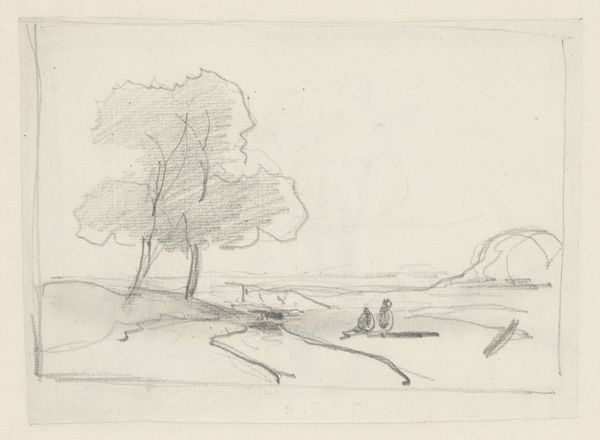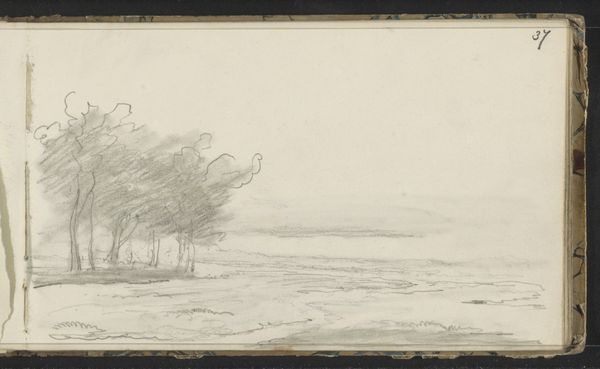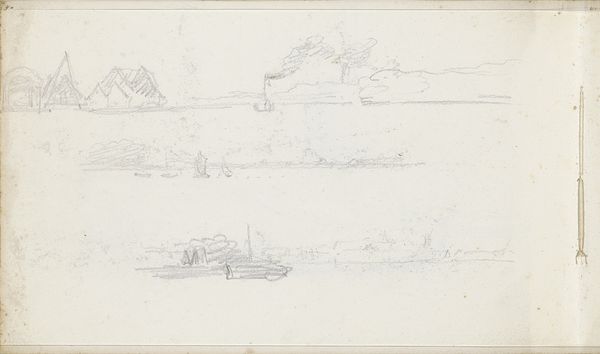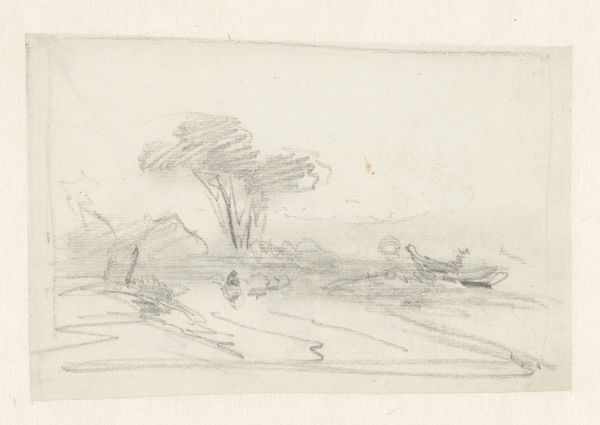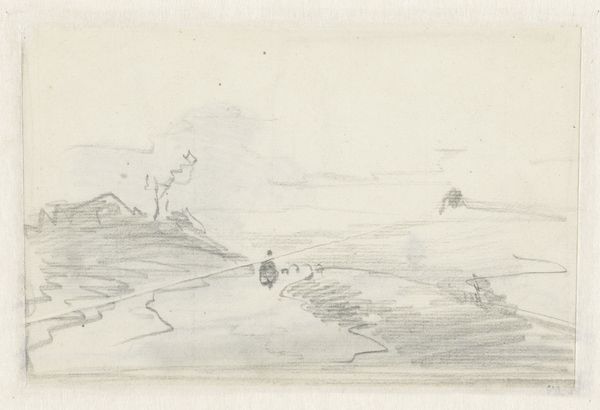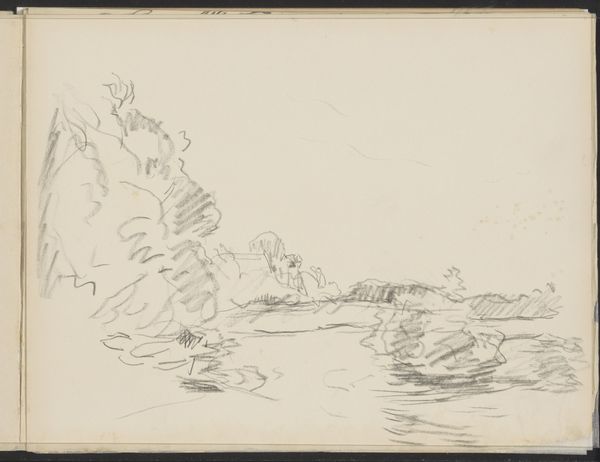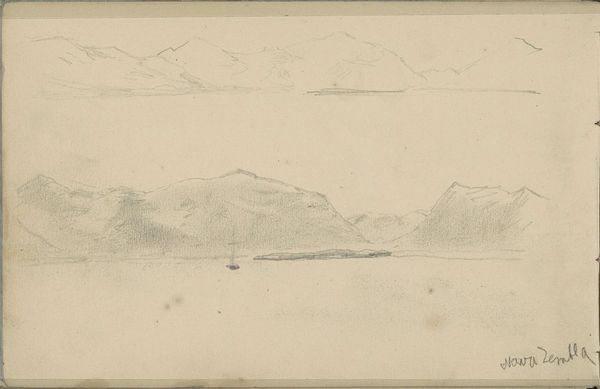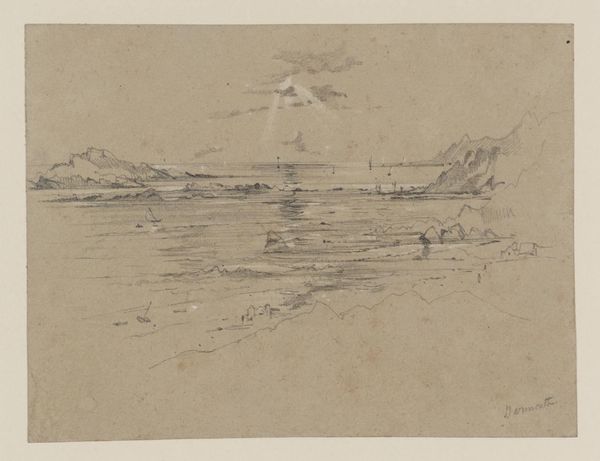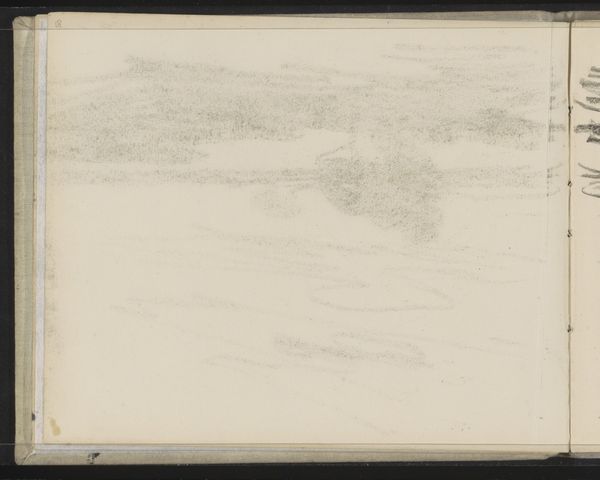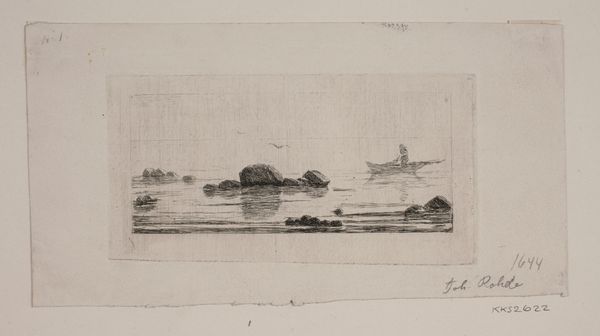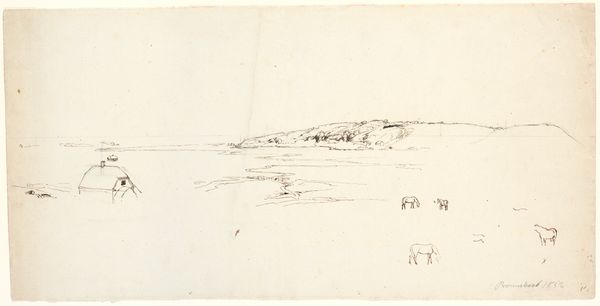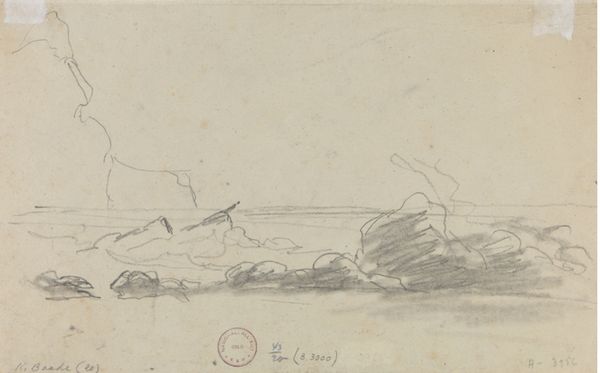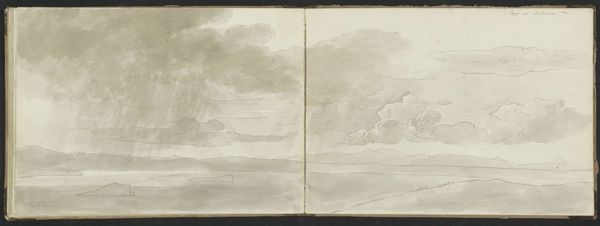
Dimensions: 121 mm (height) x 207 mm (width) x 90 mm (depth) (monteringsmaal), 126 mm (height) x 207 mm (width) (bladmaal)
Curator: Agnes Slott-Møller created "To rids af dansk kystlandskab" or "Two Sketches of a Danish Coastal Landscape" in 1897. It seems to be a piece crafted with pencil, colored pencil, and watercolor. What's your first take? Editor: Immediately, I sense a quiet stillness, a kind of preliminary contemplation. It’s intimate, like peeking into the artist's personal reflections on the landscape, not meant for public display, but raw, more for the artist herself. Curator: I'm intrigued by that notion of intimacy given the very materiality of the sketch. These are commonplace materials accessible to many—paper, pencil, watercolor, and coloured pencil—elevated through the artist's skill and the unique viewpoint offered by the Danish coastal landscape. It emphasizes art making as a common labor or a starting point accessible for most. Editor: Absolutely. But looking deeper, the choice of rendering this coastal landscape in such an ephemeral, almost fleeting style could reflect the instability of land ownership or even the rights to common spaces. We are faced here with an ambiguous sense of accessibility. In the turn of the century, what were the artist’s personal ties to the coastal landscape and was her personal relationship to the site informed by socioeconomic barriers for the people, say fishermen, who work there every day? Curator: That’s interesting, framing this image within broader issues of access. But the very nature of sketching allows us to analyze her mark making as being of its time—and so she is participating in a visual conversation with her own place and time, perhaps inevitably also of her class. The sketch isn’t as “simple” as it appears to be when examined with its contemporary methods. Editor: Right. And that kind of class analysis must further ask questions regarding Slott-Møller’s unique identity, how the female gaze informs her choice of this intimate landscape scene, or how that can intersect with a male’s, particularly the male fisherman who faces a difficult career or his class consciousness tied with labor. Curator: Thinking about this coastal setting from a materials perspective, I also consider the availability of the medium here to convey landscape as the subject--the accessibility of water for water colors, paper created from wood—all coming directly from raw materials to enable the final, captured landscape scene. Editor: I agree that a material lens sharpens our perception here, and combined with those contextual layers we are unpacking, what at first glance looks like a quick, simple sketch becomes far more potent. Curator: It’s an excellent reminder that seemingly straightforward sketches are often fertile grounds for deeper exploration into making and representation. Editor: Indeed. This small work, with its unassuming qualities, prompts larger reflections on artistic intentions, social realities, and how art engages with broader struggles.
Comments
No comments
Be the first to comment and join the conversation on the ultimate creative platform.
